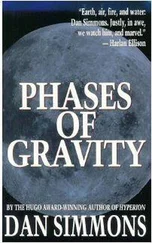A slightly wider “knife-edge ridge” of snow, a vertical snow cornice, as it were, would have readied us for what Jean-Claude liked to call “a game of jump rope.” We’d probably be tied together on such a snowy knife edge, and if the climber directly ahead of or immediately behind you slips off one side, your immediate reaction (since there’s little hope of belay from such a snowy knife edge)—an “immediate reaction” made instinctive only by many drills—must be to jump off the opposite side of the ridgeline, both of you now dangling over 4,000-foot or greater emptiness, in the desperate hope that (a) the rope does not break, dooming both of you, and (b) your weight will counter his weight in the fall.
It does work. We practiced it numerous times on a snowy knife-edge ridge on Mont Blanc. But it was a ridge where the punishment for failure—or a rope break—was a 50-foot slide to level snowfields, not a 4,000-foot drop.
I was 6 feet 2 inches tall and 220 pounds, so when I played “jump the rope” with poor Jean-Claude (5 feet 6 inches tall, 135 pounds), logic would dictate that he’d come flying up over the top of the snowy ridgeline like a hooked fish, sending both of us sliding out of control. But because Jean-Claude had the habit of carrying the heaviest pack of any of us (and was also the quickest and most skilled with his long ice axe), the balancing act usually worked, the heavily stressed hemp rope digging into the vertical snow cornice until it found either rock or solid ice.
But as I say, this long summit ridgeline of the Matterhorn is a wide French boulevard compared to knife-edge ridges: wide enough to walk upon, at least single file in some places, and—if you’re very brave, supremely skilled, or totally stupid—to do so with your hands in your pockets and other things on your mind. The Deacon has been doing precisely this, pacing back and forth along the narrow line, pulling his old pipe from his jacket pocket and lighting it as he paces.
The Deacon, who could be taciturn to the point of silence for days, evidently feels expansive this late morning. Puffing on his pipe, he gestures for Jean-Claude and me to follow him in single file to the far side of the summit ridge, where we can look down on the Italian Ridge that saw the majority of the early attempts on the mountain—even by Whymper, until he decided to use the seemingly more difficult (but in truth somewhat easier due to the angle of the huge slabs) Swiss Ridge.
“Carrel and his team were there,” says the Deacon and points to a line a third of the way down the narrow, rock-steepled ridge. “All those years of effort and Whymper ends up making the summit two or three hours ahead of his old friend and guide from Italy.”
He’s talking, of course, about Whymper and his six fellow climbers’ first summit ascent of the Matterhorn on July 14, 1865.
“Did not Whymper and Croz throw rocks down upon them?” asks Jean-Claude.
The Deacon looks at our French friend to see if he is joking. Both men smile.
The Deacon points to the sheer face on our left. “Whymper was mad to get Carrel’s attention. He and Croz shouted and dropped rocks down the north face—nowhere near the ridge where the Italians were climbing, of course. But it must have sounded like cannon fire to Carrel and his team.”
All three of us gaze down as if we could see the heartbroken Italian guide and his companions staring up in shock and defeat.
“Carrel recognized his old client Whymper’s white slop trousers,” says the Deacon. “Carrel thought he was an hour or less from the summit—he’d already led his party past the worst obstacles of the ridge—but after he identified Whymper on the summit, he just turned around and led his party back down.” The Deacon sighs, inhales deeply from his pipe, and looks out over the mountains, valleys, meadows, and glaciers below us. “Carrel climbed the Matterhorn two or three days later, still from the Italian Ridge,” he says softly, almost speaking to himself now. “Establishing Italy’s secondary provenance to the mountain. Even after the British chaps’ clear victory.”
“Clear victory, oui… but so tragic,” says Jean-Claude.
We walk back to where we’ve stowed our rucksacks against some boulders along the north end of the narrow summit ridge. Jean-Claude and I begin unpacking our lunch. This is to be our last day on the Matterhorn, and it may be our last day climbing together for some time…perhaps forever, although I desperately hope not. I want nothing more than to spend the rest of my European Wanderjahr climbing in the Alps with these new friends, but the Deacon has some business in England soon, and J.C. has to return to his Chamonix Guide duties and an annual assembly of Chamonix Guides in that tradition-haunted Chamonix Valley, with its sacred brotherhood of the rope.
Shaking away any sad thoughts of endings or farewells, I pause in my unpacking to take in the view yet again. My eyes are hungrier than my belly.
There is not a single cloud in the sky. The Maritime Alps, 130 miles away, are clearly visible. The Écrins, first climbed by Whymper and the guide Croz, bulk blankly against the sky like the sides of some great white sow. Turning slightly to look north, I see the high peaks of the Oberland on the far side of the Rhône. To the west, Mont Blanc rules over all lesser peaks, its summit snows blazing with reflected sunlight so blinding that I have to squint. Swiveling slightly to face the east, I can see peak after peak—some climbed by me during the last nine months with my new friends here, some waiting to be climbed, some never to be climbed—the stuttered and irregular array of white pinnacles diminishing to a mere bumpy horizon wreathed in the haze of distance.
The Deacon and Jean-Claude are eating their sandwiches and sipping water. I snap myself out of my sightseeing and romantic reverie and begin to eat. The cold roast beef is delicious, the bread rich with a crust that makes me work at chewing. The horseradish makes my eyes water until Mont Blanc becomes even more of a white blur.
Looking south, I celebrate the view that Whymper wrote about in his classic book Scrambles Amongst the Alps in the Years 1860–1869. I can clearly recall the words I read only the evening before, read by candlelight in my tent above Breuil, the words describing Edward Whymper’s first view from the summit of the Matterhorn on July 14, 1865 , this view that I’m devouring in late June of 1924:
There were forests black and gloomy and meadows bright and lively, bounding waterfalls and tranquil lakes, fertile lands and savage wastes; sunny plains and frigid plateaux. There were the most rugged forms, and the most graceful outlines—bold, perpendicular cliffs, and gentle, undulating slopes; rocky mountains and snowy mountains, sombre and solemn, or glittering and white with walls—turrets—pinnacles—pyramids—domes—cones—and spires! There was every combination that the world can give, and every contrast that the heart could desire.
Yes, you can tell that Edward Whymper was an absolute romantic, as were so many of the Golden Age climbers in the mid- and late 1800s. And his writing is flowery and old-fashioned by the lean, modern standards of 1924.
But as to the charge of being a hopeless romantic, I confess that I am as well. It’s part of my nature. Perhaps it is my nature. And although I’d graduated from Harvard as an English major ready to write my own great travelogues and novels—all in the lean modern style, of course—I’m surprised to find that Edward Whymper’s nineteenth-century wording—flowery prose and all—has once again moved me to tears.
So on this June day in 1924, my heart responds to the words written more than fifty years earlier, and my soul responds even more hopelessly to the view that prompted those words from the sentimental Edward Whymper. The great mountain climber was twenty-five years old when he first climbed the Matterhorn and saw this view; I’ve just celebrated my twenty-second birthday, two months before earning this view for myself. I feel very close to Whymper and to all the climbers—some of them hard-bitten cynics, but others romantics like myself—who have looked south at Italy from this very ridge, from this very throne of a low boulder.
Читать дальше












